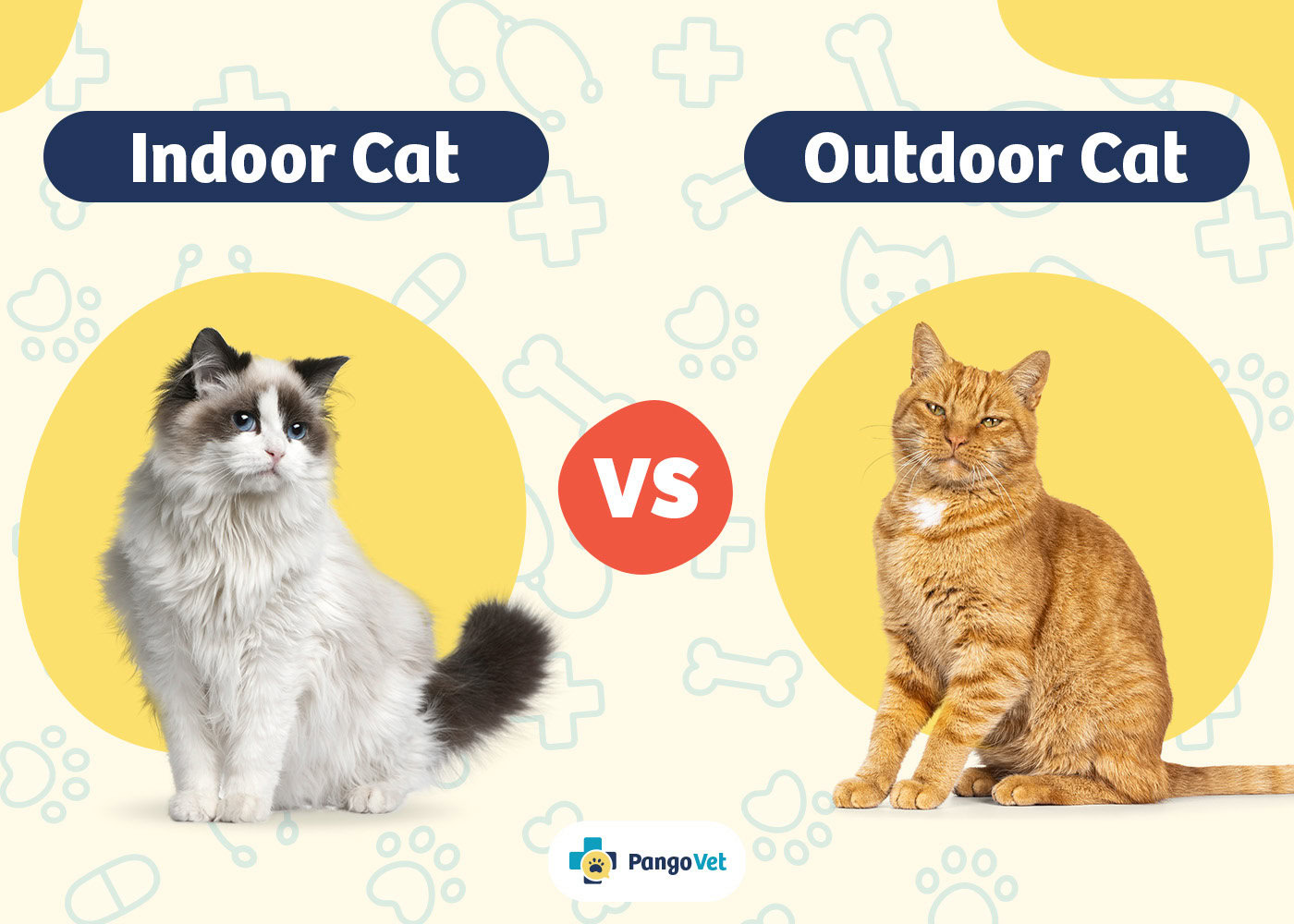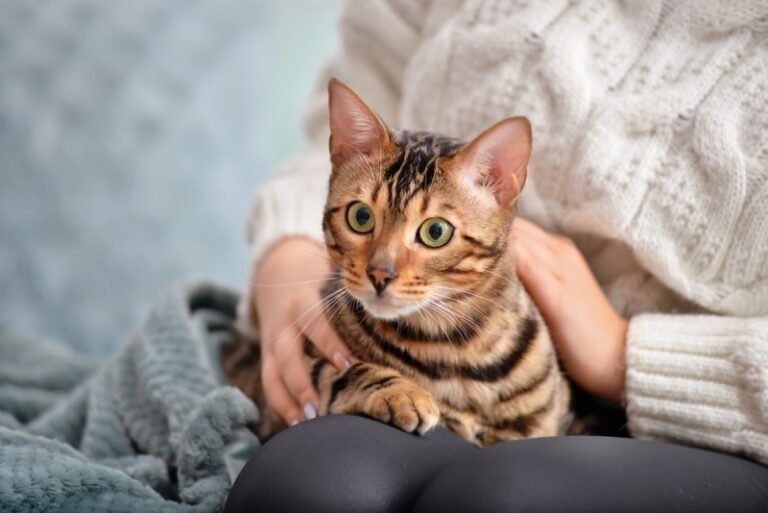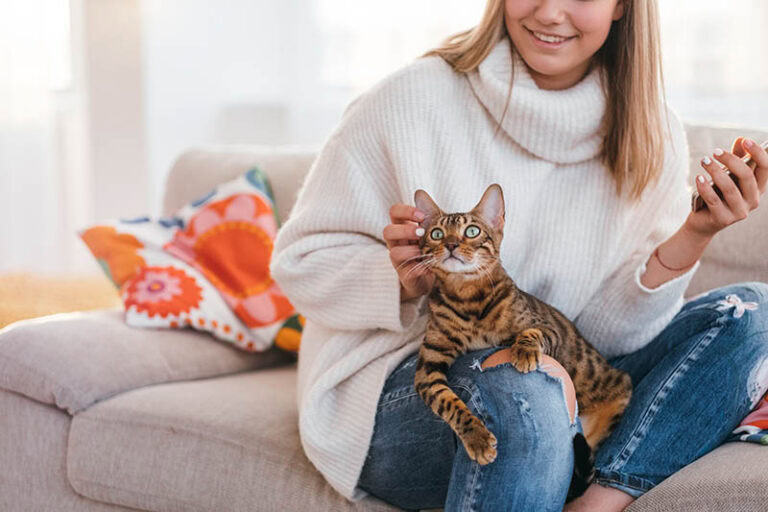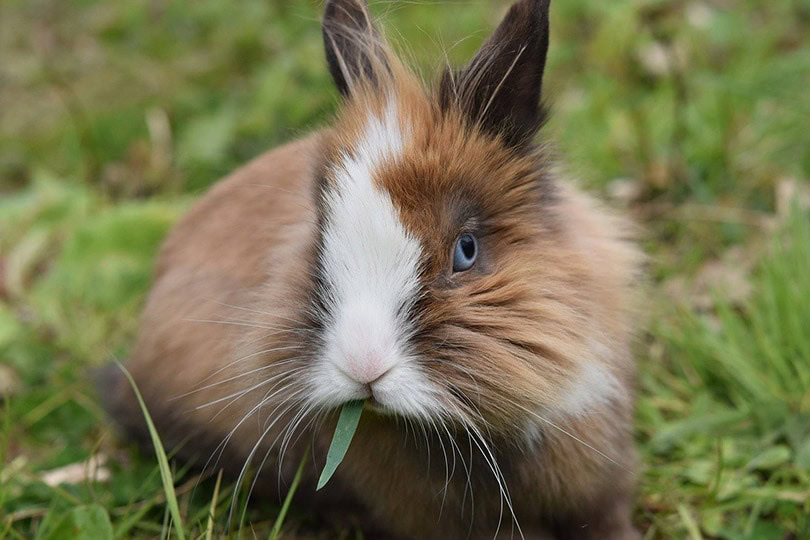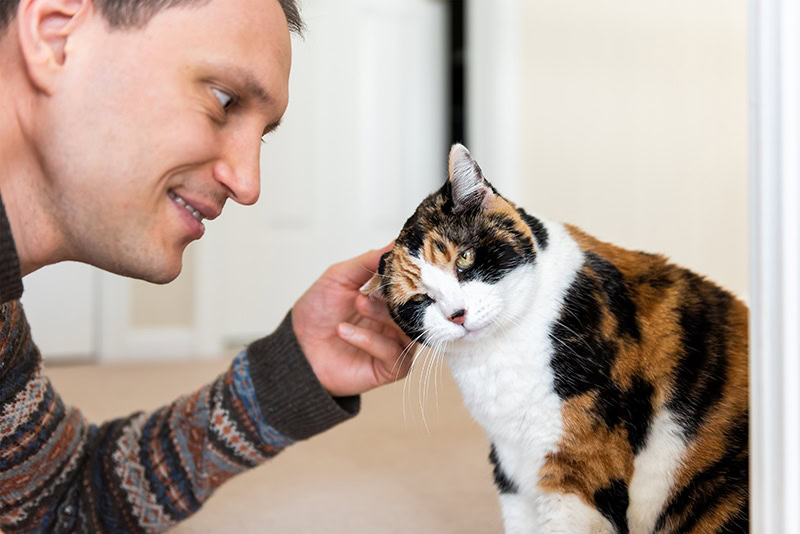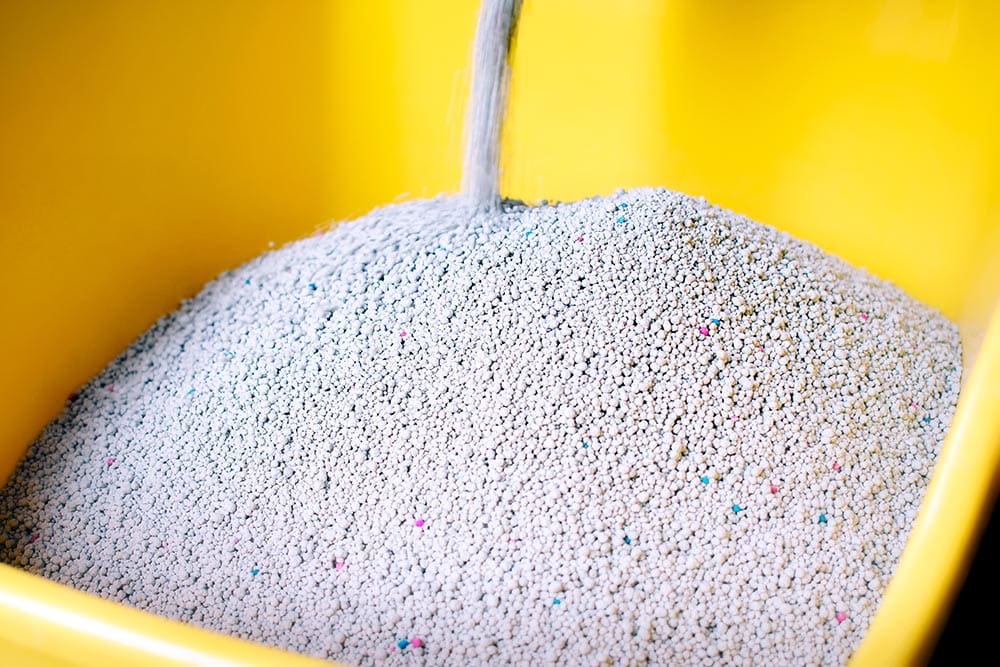VET APPROVED

The information is current and up-to-date in accordance with the latest veterinarian research.
Learn more »Click to Skip Ahead
Keeping your cat indoors or outdoors is an age-old debate with pros and cons on both sides of the argument. Outdoor cats do have a shorter lifespan as they are at risk of being attacked by other animals, getting in fights with other cats, and catching infectious diseases. They are also more exposed to extreme weather conditions and toxins, while also being at the mercy of traffic and other people.
On the other hand, some believe that outdoor cats lead more fulfilling lives because they get the physical and mental stimulation they require. However, it’s important not to overlook the serious negative impact outdoor cats can have on local wildlife due to their natural hunting instincts. As a result, this debate continues to be as relevant as ever.
Important note: Any cat—regardless of breed—can end up living indoors or outdoors depending on their circumstances. Some may be house pets with supervised outdoor access, while others become strays after being abandoned by their families. Feral cats, born and raised without human contact, live entirely outdoors and are generally not socialized to people.

Visual Differences
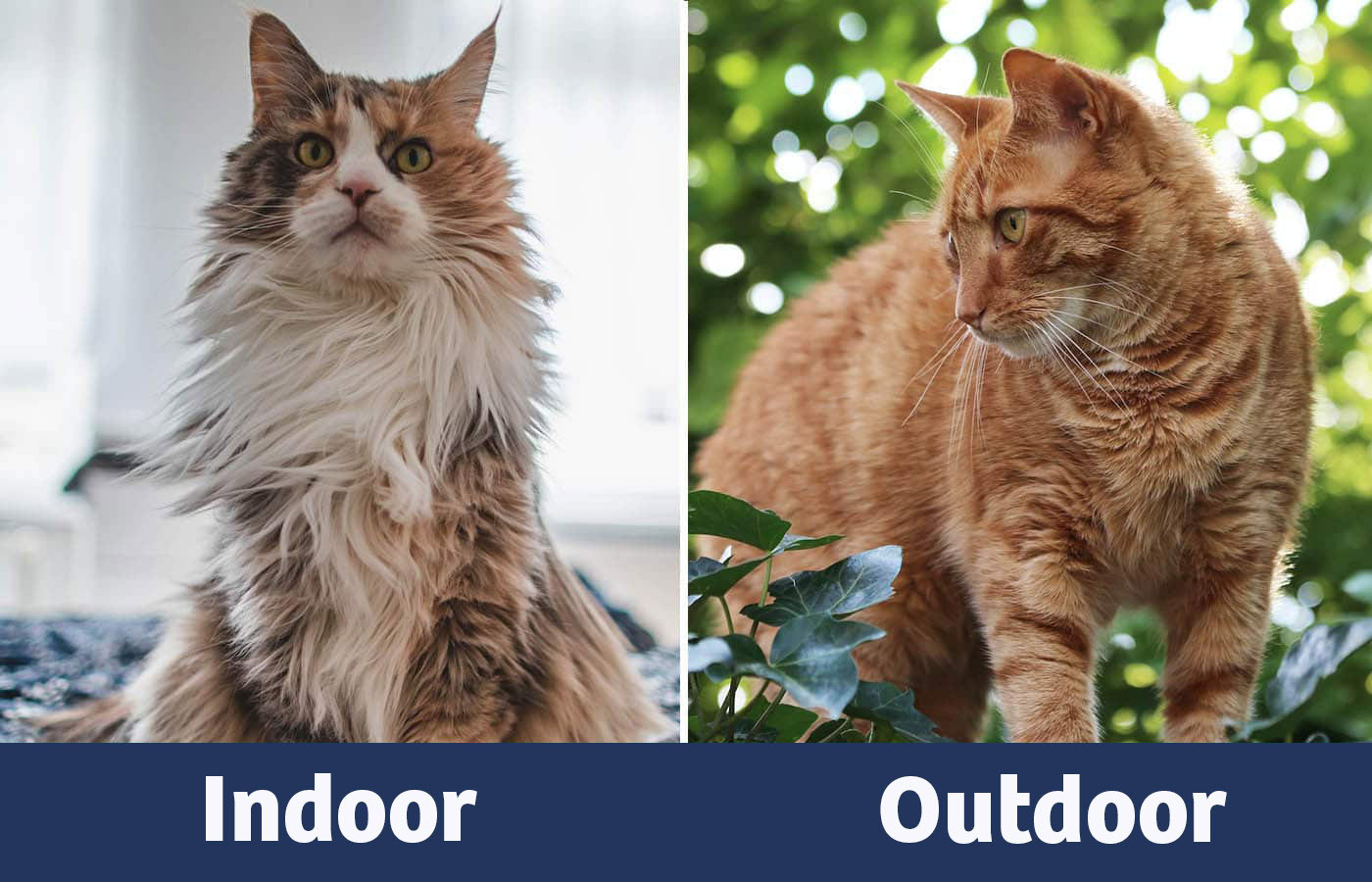
At A Glance
- Average life expectancy of 15 years
- No negative impact on local wildlife numbers
- Less exposure to external and internal parasites
- Require an enriched home environment to fulfill their needs
- Average life expectancy of 2–5 years
- More exposure to parasites and infectious diseases
- Receive more mental and physical stimulation
- Better mental stimulation
- Less chance of destructive behavior
- Serious negative impact on local wildlife

Overview of Indoor Cats
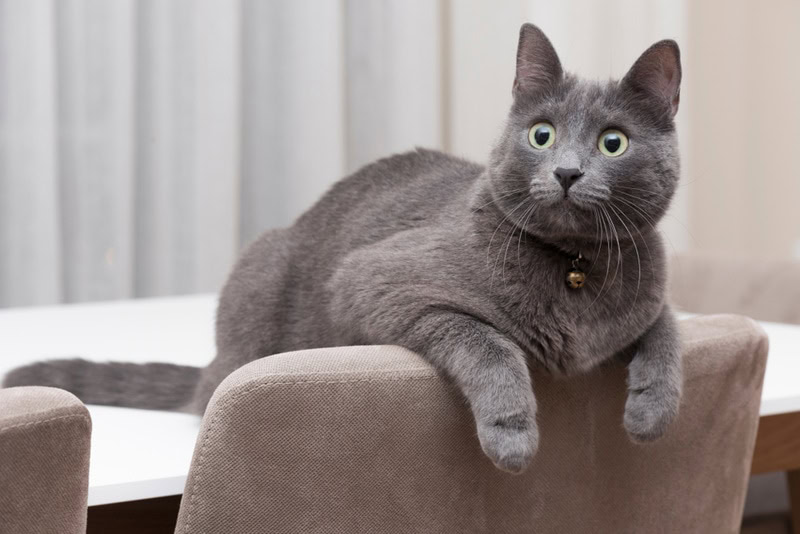
An indoor cat is exclusively kept indoors and is not allowed to go outdoors, although some indoor cat owners do install catios or even take their cats out for walks on leashes. Indoor cats do not come into contact with local wildlife or other, potentially territorial, or unvaccinated pets. They also don’t have access to roads or traffic, and it is this lack of potential danger that encourages indoor cat owners to keep their cats indoors.
However, there are some potential pitfalls. Many cats yearn to be outdoors, especially if they have previously been given the freedom to roam outdoors. As such, they can get bored and may exhibit some unwanted behavior. Indoor cats must get plenty of stimulation and physical exercise.
Safety and Threats
The greatest advantage of having a cat as an indoor cat is the safe and controlled environment in which they live and the possibility of avoiding the threats of the street. An indoor cat will have contact exclusively with other cats or pets, if any, and with family members or visitors. Although it may seem like a boring life, indoor cats can lead a very quiet and happy life in this way, without having to worry about defending their territory or traffic with other cats.
On the other hand, letting your cat roam also poses a threat to the local wildlife. Cats do hunt and kill birds, as well as small rodents and reptiles. A 2013 study estimated that outdoor cats kill 1.3–4 billion birds and 6.3–22.3 billion mammals annually in the U.S.
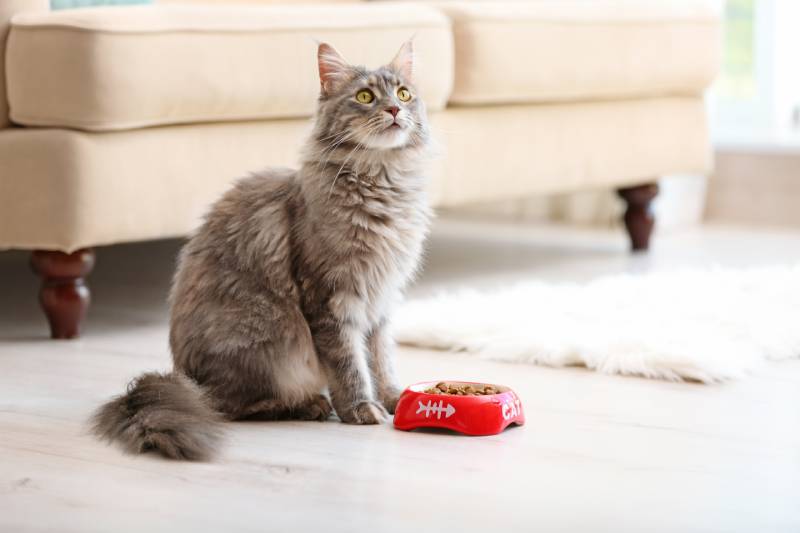
Exercise and Stimulation
Indoor cats do need some form of regular exercise, whether that’s achieved by a combination of interactive toys, walks on a leash, or scheduled playtime sessions with their owner. They need to express their natural hunting instincts and engage in behaviors like running, stalking, and pouncing. Cats need exercise for both their physical and mental well-being, to avoid behavioral problems and maintain a healthy weight.
Playing with toys can also help exercise the cat’s mind. When they are outdoors, they are presented with new situations and challenges, which keeps their minds sharp. When they are kept in the same house every day, it can become boring and even lead to behavioral problems such as destructive behavior and inappropriate urination.
If you are concerned about your cat’s behavior, we suggest speaking to one of our vets.
When Is It Best to Keep a Cat as an Indoor Cat?
Most experts recommend that pet cats be kept as indoor cats because of the potential threats they face when outdoors. However, some owners prefer to let their cats roam outdoors and have a safe haven to come home to. There are some situations when it is definitely best to keep your cat as an indoor cat. If you live in an area with natural predators like foxes or wolves, letting your cats out poses a threat to their welfare.
Similarly, if your neighborhood has a lot of territorial cats and dogs, it may be too dangerous for your cat. Busy roads are another potential threat, although cats on busy roads tend to steer clear of the road itself, while those on quieter roads may not know how to react when confronted by a car or other vehicle.
- Longer life expectancy
- Less chance of fleas and ticks
- No impact on local wildlife
- Owners always know where their cats are
- Less spontaneous mental and physical stimulation
- Higher risk of boredom and weight gain

Overview of Outdoor Cats
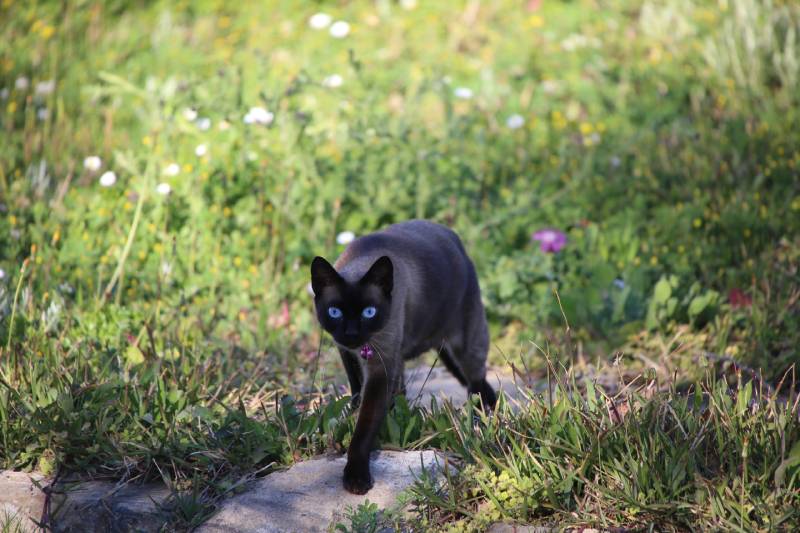
Although some cats are kept solely as outdoor cats, the term is usually used to refer to those cats that live indoors but are free to roam outdoors some or all of the time. Exclusively outdoor cats are usually kept as working cats, for example, as farm cats to protect the grain and prevent mice and rats from eating it. Outdoor cats are at greater risk from wildlife, traffic, toxins, and even people.
However, they get more exercise and tend to enjoy greater mental stimulation than indoor cats.
Safety and Threats
Outdoor cats face several potential threats. First of all, they may get into fights with other cats in the neighborhood. Some cats can be very territorial and may not take well to a new cat on the block. Cat fights can lead to injury and if your outdoor cat feels threatened every time it puts a paw through the cat flap, it can lead to anxiety.
Local dogs may also be a threat, while wildlife, including animals like foxes and wolves, will prey on cats if they view them as potential meals. Cars, bikes, and other traffic can be a real hazard, and even a street-smart cat that is used to staying away from the roads may be chased or run into a road. Unfortunately, there are also incidents where people steal cats to resell or for other purposes.
Another potential problem with letting a cat outdoors is the threat they pose to other animals, including pets and wildlife. If yours is the territorial cat, it could injure or harass other cats in the area. And cats do chase and hunt smaller wildlife.
Finally, outdoor cats face greater exposure to environmental threats. This means your cat is more likely to get fleas or ticks and may come into contact with unvaccinated cats. They may also be faced with extreme heat and cold, as well as other extreme weather conditions. You also can’t control what your cat eats while it is out of the house, which means your cat could consume inappropriate foods or toxins.
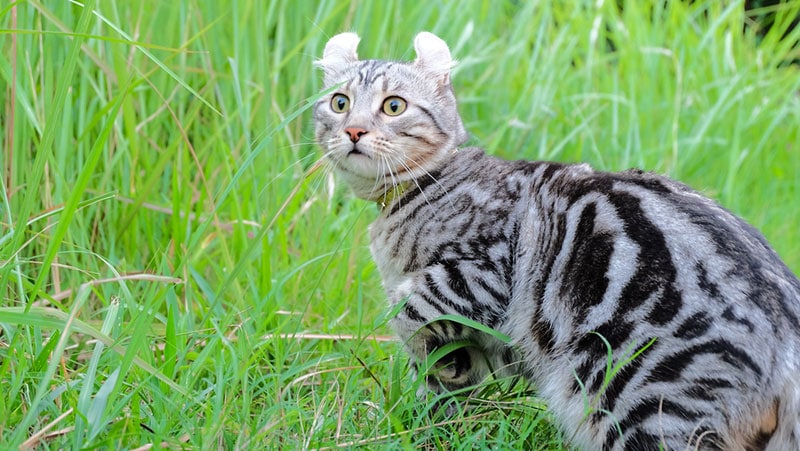
Exercise and Stimulation
Outdoor cats do get more physical exercise and mental stimulation. This can come in the form of hunting, playing, and bonding with other cats, and just generally from being able to roam greater distances than in the home. Physical exercise helps maintain a healthy weight, while mental stimulation keeps a cat mentally active and prevents boredom and anxiety. It can prevent destructive behavior and even stop your cat from urinating and spraying indoors.
When Is It Best to Keep a Cat as an Outdoor Cat?
There are some situations where it may be best to keep a cat as an outdoor cat or to allow it to have access to the outdoors. Whether you live in a city or a rural area, there are potential threats for cats, but those in rural areas tend to face fewer threats. If you just adopted a cat that used to have outdoor access, letting it have time outdoors may be beneficial.
- Naturally gets physical exercise
- Being outdoors provides mental stimulation
- Can prevent unwanted behavior
- Less indoor cleanup
- Prone to fleas and ticks
- Prone to hazards like traffic accidents and toxins

Indoor vs Outdoor Cats Statistics
American cat owners are more likely to keep their cats indoors than outdoors. Figures suggest that nearly two-thirds of all pet cats in the U.S. are kept predominantly as indoor cats. This is also higher than in other countries. While the UK has seen an increase, still only slightly more than a quarter of cats in the country are kept as strict indoor cats.
The main reason for keeping cats indoors is that it greatly increases their life expectancy. Indoor cats have an average lifespan of 10 and 15 years, while strict outdoor cats have a life expectancy of just 2 to 5 years.
Busy Roads vs Urban Streets
It seems logical to prevent cats from going outdoors where owners live on busy roads. More cars mean more chances of cats being involved in road traffic accidents. However, the reverse may be true. Cats that do live on busy roads are used to cars and typically know to stay away from the road. Cats that live on quieter roads don’t know how to act or react when there are cars, which means they may be more likely to be involved in accidents.
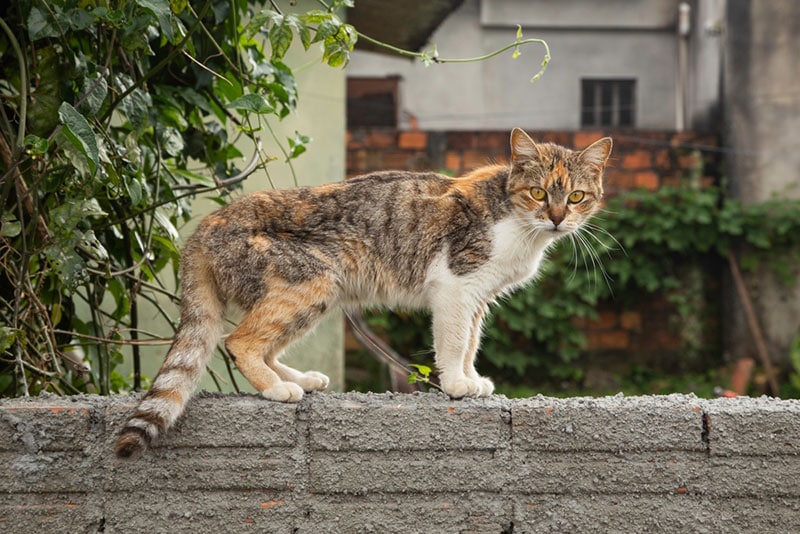
Exercise Requirements
Outdoor cats tend to get the physical exercise they need when they are outdoors, although this can be further supplemented with playtime at home. Indoor cat owners need to find ways to ensure that their feline friends are getting enough exercise, otherwise, cats can become overweight or even obese. Cats are considered overweight when they weigh 10% or more above their ideal body weight. They are obese when 20% or more are above that level. Obesity reduces a cat’s quality of life significantly.
Exercise options for indoor cats include adding an enclosed section outdoors where your cat can play but can’t escape from, like a catio, scheduled play sessions, and even walks on a leash. You can also use wand toys and other indoor toys to encourage more physical activity from your cat.
Mental Stimulation and Behavioral Problems
Mental stimulation is also important to cats. Bored cats can suffer from behavioral problems. Bored cats are more likely to scratch furniture and destroy items around the house. They may also be more prone to scratching and biting, and anxiety can lead to inappropriate littering.
Wildlife Predation
One reason that owners may choose to keep their cats as indoor cats is the impact they have on local wildlife. Cats are natural predators that prey on small mammals as well as birds and some other groups of animals.
It’s impossible to know exactly how many animals pet cats kill but some estimates suggest that the figure could be as high as 4 billion birds and more than 22 billion mammals and that cats are partially or wholly responsible for the extinction of 33 species. If you do let your cat out, you can put a bell on its collar, which may help prevent the predation of some animals, but this is unlikely to stop your cat from killing mice and other small mammals.
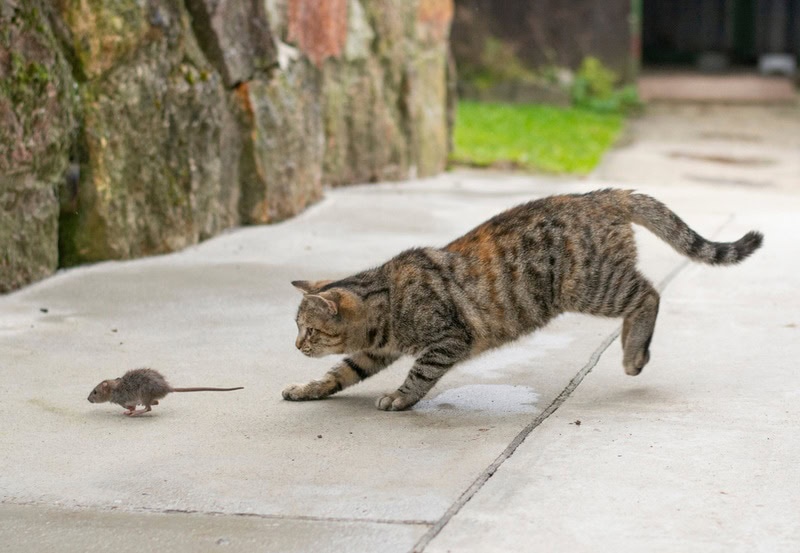
Vaccinations
All cats benefit from being vaccinated, but it is especially important if you let your cat spend time outdoors. Vaccination can help protect against feline distemper, herpesvirus, calicivirus, rabies, and feline leukemia. It not only protects your cat but also helps prevent the passing on of these conditions to other cats, therefore protecting the cat population as a whole.
No vaccination is 100% reliable, though, and letting your cat out, even if it is fully vaccinated, puts it at greater risk of meeting unvaccinated cats that can pose serious health risks to your pet.


Conclusion
Cats are very popular companion pets that are second only to dogs in terms of their popularity. While the majority of owners in the U.S. do keep their cats as strictly indoor cats, this isn’t true in other countries, where cats tend to be kept as indoor pets but with the freedom to roam outdoors.
There are pros and cons to both, with indoor cats being safer but generally enjoying less physical exercise and mental stimulation. Outdoor cats, on the other hand, get plenty of stimulation but are at greater risk of predation and accidents.
- https://www.banfield.com/en/Wellness-at-banfield/kitten-hub/indoor-vs-outdoor-cats
- https://www.dailypaws.com/cats-kittens/cat-safety-tips/indoor-vs-outdoor-cats
- https://homeandroost.co.uk/blog/indoor-vs-outdoor-cats/
- https://www.rover.com/blog/indoor-cats-vs-outdoor-cats/
- https://vcahospitals.com/know-your-pet/obesity-in-cats
- https://www.ncbi.nlm.nih.gov/pmc/articles/PMC7909512/
- https://www.vet.cornell.edu/departments-centers-and-institutes/cornell-feline-health-center/health-information/feline-health-topics/feline-vaccines-benefits-and-risks
- https://www.nature.com/articles/ncomms2380
Featured Image Credit: (T) Diana Parkhouse, Unsplash | (B) Sandy Millar, Unsplash
